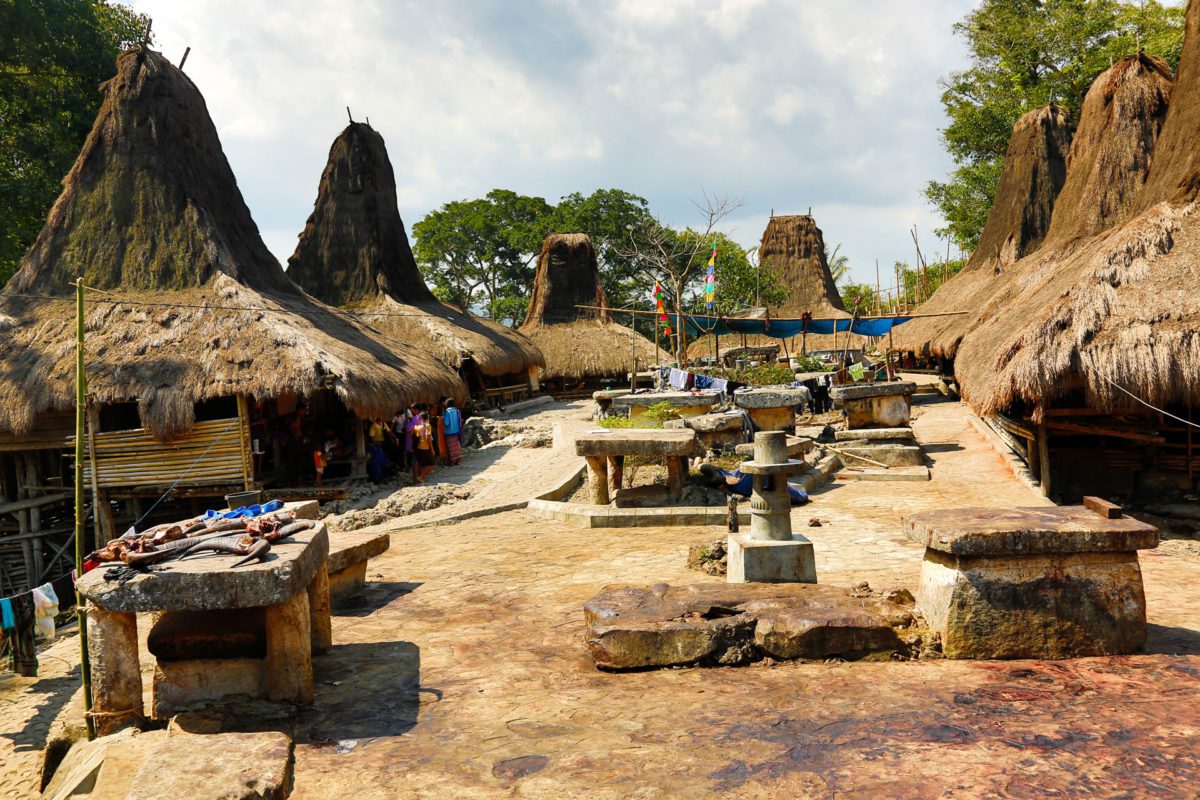If you want to know what Bali was like before it hit the big time, visit Sumba. The classic Indonesian islands lie almost next to each other on the archipelago, but are worlds apart in the glitz and glam department.
Yes, some investment has come to Sumba Island as of late but so far, not widespread commercialism. And, for many, that’s precisely Sumba’s charm – along with waterfalls, dramatic rock cliffs, white sand beaches and some of the best surfing anywhere.
Fly into either Waingapu in the north central part of the island or Tambolaka in the northwest. Waingapu is Sumba’s largest city (population: 36,000) and has a strong geographic bond with the land and the water.
Tambolaka airport and the city of Waitabula are smaller than Waingapu, and offer glimpses into traditional Sumbanese life. At Ratenggaro Village, homes are built on hilltops in the time-honored fashion, featuring high-pitched thatched roofs and tall, pointy peaks made of bamboo and grass.
Stay at the Nihi Sumba, a secluded resort about 40 miles south of Tambolaka on the shores of the amazingly blue Indian Ocean. Built in 1988 by die-hard surfer Claude Graves in the indigenous style, Nihi is 33 villas scattered on more than a mile of oceanfront.
This is where you can swim with horses, plan a spa day, enjoy a private suite with your own pool and rejuvenate in the open-air Ombak restaurant looking out over the ocean.

What drew Claude to the Nihi area is just offshore – world-class surfing, anchored by “Occy’s Left,” a break that produces waves of epic proportions. Locals call it the perfect left-hander. Several surf camps are in the area.
The island’s unusual beauty is accented by several striking waterfalls such as Tanggedu, the so-called Grand Canyon of East Sumba, just north of Waingapu. It’s a little bit of a hike, but once you get there, several natural swimming spots make it all worthwhile.
Ninety miles from Tambolaka is Batu Bolong on Bawana Beach. The ocean has carved a huge hole into the massive rock wall that juts out into the surf from the lovely sand beach and green cliffs. It’s the stuff of movies – you can almost see James Bond flying a gyroplane through the arch.

In western Sumba, what lies just offshore on Watu Maladong Beach is jaw-dropping: Enormous scrub-covered rocks rise out of the beach unexpectedly, as if on stilts. The beach is soft and the swimming is excellent.
At Walakiri Beach just outside Waingapu, the shoreline is adorned with a troupe of dwarf mangrove trees that emerge so expressively from the water, it appears they’re dancing. (It’s a great sunset spot, too.)
Sumba Island is part of the Coral Triangle, and the snorkeling is fantastic. The sand is white, the waters are blue and the wildlife is abundant. More than 600 different corals and 3,000 species of reef fish inhabit these waters.
Burying loved ones in above-ground stone megaliths is still done routinely on Sumba. Thousands of the revered, often decorated monuments dot the landscape; many villages are actually built around them.
A number of small, quirky restaurants stay busy in Waingapu and Tambolaka. Have ginger coffee in the morning; it’s a Sumbanese tradition. Take a break for a lunch of manggulu, a local dish made of bananas and fried peanuts. Dinner might be manu pata’u, a native concoction of chicken marinated in coconut milk. The goat is also very good.
Shoppers take note: Unusually high quality double-woven Ikat cloth is made in many smaller villages. The weavings use bright colors and may depict animals, mythical creatures or warfare. Look for well-made sarongs and baskets, too.

























